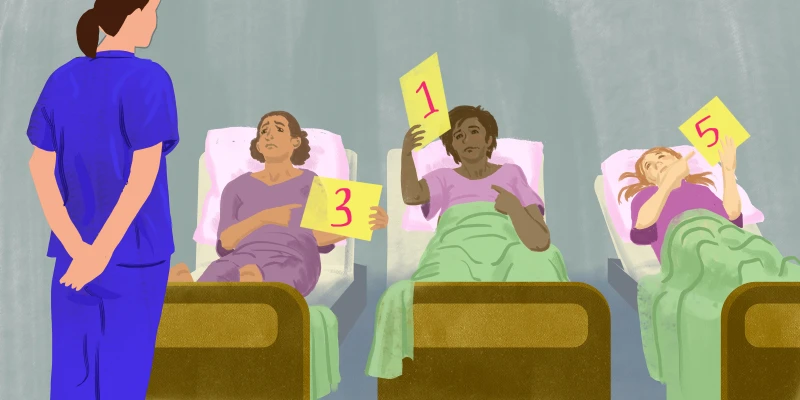
I arrived in Toronto for the World Conference on Lung Cancer (WCLC) prepared for a whirlwind of activity. With committee and personal meetings to attend, as well as a handful of presentations to give, I barely had time to stop and reflect upon the remarkable collection of people that were gathered there. WCLC is relatively unique in that it brings together individuals treating and interested in lung cancer from numerous specialties: oncologists, surgeons, radiation oncologists, pathologists, epidemiologists, scientists, and others. The International Association for the Study of Lung Cancer (IASLC) who organizes WCLC has also wisely added patients and advocates to that mix, enabling a palpable focus on meaningful outcomes and on lung cancer advocacy. All of these stakeholders come together to cover the entire spectrum of lung cancer. However, within this vast ocean of presentations, it can feel a bit like paddling a rowboat to get from place to place to try to grasp the big picture of what is happening in the field.
Fortunately, that clarity came during the Presidential Session on Tuesday morning. I sat back and simply listened to this stunning array of talks that described remarkable progress across disparate disease areas: targeted therapy for non-small cell lung cancer (NSCLC), treatment of small cell lung cancer, immunotherapy for early stage disease, and finally lung cancer screening. The scope of those topics and the number of patients they cover is truly astounding. The lung cancer community isn’t just making progress in small incremental niches, but rather moving ahead by leaps and bounds across multiple fronts. Take for example targeted therapy. Investigators presented the early results of the ALTA-1L trial of a second-generation ALK inhibitor, brigatinib, for patients with ALK rearrangements. Brigatinib was compared to the prior first line treatment crizotinib, itself a remarkable story given its rapid movement to clinical use after the discovery of ALK rearrangements in lung cancer. With an objective response rate of 71% and an estimated 12-month progression-free survival of 67% with brigatinib (both bettering crizotinib), we are clearly raising the bar for patients with stage IV lung cancer with targetable molecular alterations, an increasingly broad group of patients.
Of course, targeted therapy for NSCLC has had a string of recent successes and is nothing new. Perhaps a better gauge of progress is small cell lung cancer, a disease for which survival is typically less than one year and for which frontline therapy hasn’t changed for about 20 years from an established regimen of cytotoxic chemotherapy. Study after study has disappointedly failed in this area. However, investigators presented results from IMpower 133, a randomized trial testing the addition of immunotherapy (atezolizumab, a PD-L1 inhibitor) to standard chemotherapy. And at last we had a successful trial! Although the median overall survival improvement of just two months (12.3 in the treatment group vs. 10.3 in the placebo group) may not seem like much, pushing survival over one year and reducing the risk of progression or death by 23% are truly breakthroughs for patients with this difficult-to-treat disease. Hopefully longer-term follow-up will demonstrate even more meaningful survival improvements in a proportion of these patients. Further work to find optimal immunotherapy regimens and to better target these drugs within the small cell patient population is already under way.
Another area of critical interest in the lung cancer community is the idea of moving immunotherapy into earlier stage cancer. Perhaps in these patients with less disease burden, we can hope for actual cures. Accordingly, another Presidential Session abstract highlighted a breakthrough for immunotherapy in stage III patients. The PACIFIC trial had already reported progression free survival, leading to approval of durvalumab, another PD-L1 inhibitor, for patients with stage III unresectable NSCLC. At WCLC investigators reported overall survival results from the PACIFIC trial that showed a 32% reduction in deaths in patients receiving immunotherapy. Remarkably, 66% of patients in the durvalumab group were still alive at 24 months. Similar to the other studies, adverse events with the trial drugs were not dramatically increased over placebo, affirming that not only can we treat these patients better, but that we can treat them safely and allow for good quality of life. Hopefully, PACIFIC will be an impetus for further studies of immunotherapy in even earlier stage NSCLC, where recurrence rates are still relatively high.
Finally and most striking to me personally, was the long awaited presentation of the results of the NELSON trial, a study on the benefits of chest CT screening for lung cancer in at risk populations in Belgium and the Netherlands. Here the Presidential Session shifted from the focus on new treatments for patients with advanced disease, to finding lung cancer earlier in order to prevent advanced disease. And what remarkable results they were! Whereas almost 50% of patients in the control arm were diagnosed with stage IV lung cancer, it appears that only around 12% of patients in the screened arm had progressed to stage IV lung cancer. This stage shift undoubtedly contributed to the significant improvement in lung cancer mortality in patients at year 10 after screening: a 26% reduction in men (p=0.003) and an even more pronounced 39% reduction in mortality in women (p=0.054). These results should reenergize the lung cancer screening community. Screening remains vastly underutilized in at-risk patient populations, with less than 10% of eligible patients undergoing CT screening for lung cancer. If the results of the NELSON trial hold up in a peer-reviewed publication, I hope and expect that to change dramatically.
In summary, it is obvious that we are at a tipping point regarding the study and treatment of lung cancer. What was once a stigmatized disease with a dismal prognosis is now the poster child of targeted therapy and immunotherapy. Energized patients and advocates are raising their voices and demanding attention to their disease and demanding more funding for groundbreaking research. Screening for lung cancer is effective and should lead to earlier detection and to more lives saved. As I tell my patients, there has never been a better time to have lung cancer. Hope is here.
Brendon Stiles, MD is a thoracic surgeon specializing in lung cancer at Weill Cornell Medicine, New York-Presbyterian Hospital. He is also the Chair of the Lung Cancer Research Foundation. Dr. Stiles has received advisory board fees from AstraZeneca and Merck. His wife is employed by Pharmaceutical Product Development (PPD) and previously by Pfizer and receives stock and salary from both. Dr. Stiles is the Board Chair for the Lung Cancer Research Foundation (not-for-profit).







